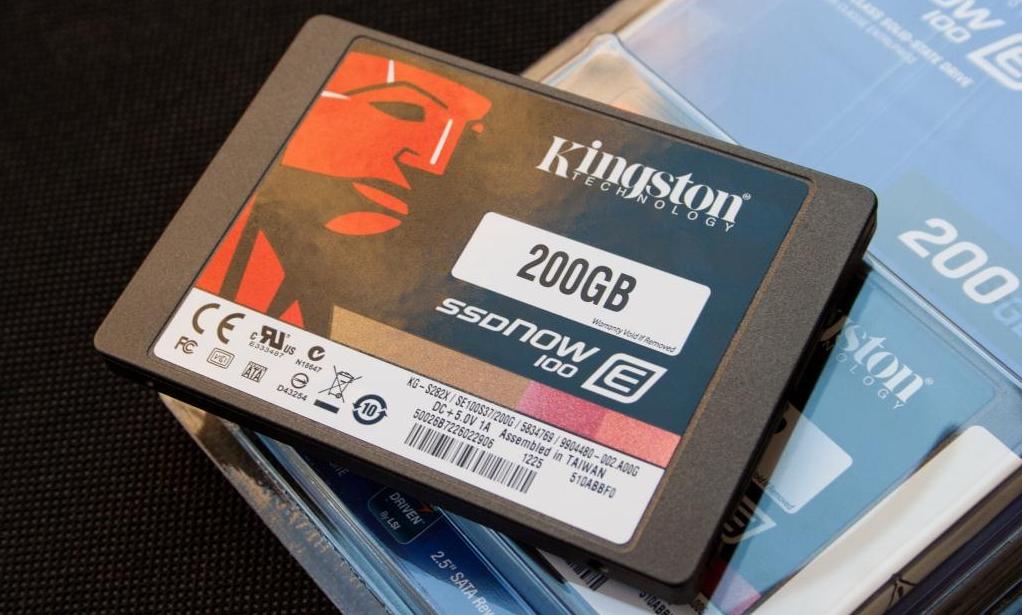Kingston, like other memory manufacturers, wanted to get into the solid state storage game a few years back. At the time they chose to partner with Intel, offering their own label on the chipmaker’s first gen SSDs like enterprise-oriented X25-E. Eventually, they branched out with new controllers from Toshiba and JMicron, resulting in a bewildering array of options. More recently, Kingston switched to second generation SandForce ASICs for the original HyperX, eventually leading to a host of SF-powered offerings for consumer and businesses alike.
INTRODUCTION
Part of what made the original HyperX such an interesting product was its use of 5,000PE cycle-rated flash. Due to their longstanding relationship with Intel, Kingston was able to get their hands on Intel’s special stash of 25nm NAND rated at 5K PE cycles for the first HyperX. That drive, and the more value conscious 3K model which followed, went on to become incredibly popular with enthusiasts.
Now with the E100, Kingston has come full circle. Unlike Kingston’s first enterprise drive based on the X25-E, there isn’t a trace of Intel flash or controllers to be found. Unlike the client driven SandForce products that make up the rest of Kingston’s solid state drive portfolio, the E100 is targeted strictly at the enterprise market. Using 30,000 PE cycle-rated Toshiba eMLC and an enterprise-class SF-2582 “flash storage processor”, the E100 brings both endurance and enterprise features to the table.
Kingston surely has lots of options when it comes to putting a controller in their SSDs, but like a majority of the industry decided to stick with LSI SandForce. Going with SandForce nets manufacturers a mostly turn-key solution; you get validated reference firmware, NAND level redundancy (R.A.I.S.E), along with SandForce’s defining characteristic in the name of real time data deduplication. In exchange for lower write amplification, potentially fewer writes to flash, and superb speed when data is easily compressible, the performance advantage falters when data trends incompressible.
The currently-shipping SSDnow E100 is available in 100GB, 200GB, and 400GB capacities. We’re looking at the mid-range 200GB today, though all three drives possess similar performance characteristics. Kingston says the E100 can hit typical SandForce sequential speeds of 535MB/s reads and 500MB/s writes, while random performance varies by the amount of flash. Sustained 4K random reads/writes IOPS also breaks down to 47,000 4K read/81,000 4K write for the 100GB, 59,000 4K read/72,000 4K write for the 200GB and 52,000 4K read/37,000 4K write for the 400GB varient.
INSIDE THE KINGSTON E100
Just like the Kingston HyperX, it takes a #6 security torx bit to crack open the E100’s 7mm chassis.

 Our 200GB model has 256GB of Toshiba eMLC onboard. 128GB of that is placed on the front alongside the SandForce 2582 flash storage processor. The remaining 128GB and power loss protection system are found on the opposite side. After sacrificing one die worth of capacity to R.A.I.S.E., other SandForce needs, and some additional overprovisioning (28% officially), 186Gb remains for user storage.
Our 200GB model has 256GB of Toshiba eMLC onboard. 128GB of that is placed on the front alongside the SandForce 2582 flash storage processor. The remaining 128GB and power loss protection system are found on the opposite side. After sacrificing one die worth of capacity to R.A.I.S.E., other SandForce needs, and some additional overprovisioning (28% officially), 186Gb remains for user storage.
From the NAND’s TH58TAG7E2F7BA89 part number, we know each package is composed of 32nm Toshiba Toggle. Since each die is 32gbits (4GB), each package has four dice.
Were it was that Intel made their HET-MLC available to others, Kingston could have very well-chosen that. Since that isn’t an option though, Toshiba’s 32nm eMLC was sourced instead. Toshiba is an increasingly popular choice among LSI SandForce drives, and their 30,000PE cycle NAND is even used in LSI’s own flash products like the WarpDrive and Nytro families.
With 30K PE cycles to play with, the 200GB E100 is bestowed with a TBW (Total Bytes Written) figure of 857TB. That number is an estimate based on high queue depth 4K random writes across the entire drive. Under that type of workload, write amplification jumps through the ceiling, meaning that for every GB the host system asked the drive to write, several multiples of that 1GB were written shuffling data around and clearing garbage-laden blocks out of the way. The extra overprovisioning helps reduce write amplification, perhaps as much as a 2x reduction over similar drives that forgo additional spare area in favor of better price/GB ratios.
The enterprise flavors of SandForce FSPs support power-loss-protection, keeping the omnipresent risk of data corruption to a minimum in the event of a sudden power loss. As is becoming fashionable these days, one supercapacitor has been replaced by several solid state caps. Supercaps are expensive, and using multiple smaller caps removes the single point of failure of a single large cap, cutting down on the bill of materials in the process.
 The SSD Review The Worlds Dedicated SSD Education and Review Resource |
The SSD Review The Worlds Dedicated SSD Education and Review Resource | 
